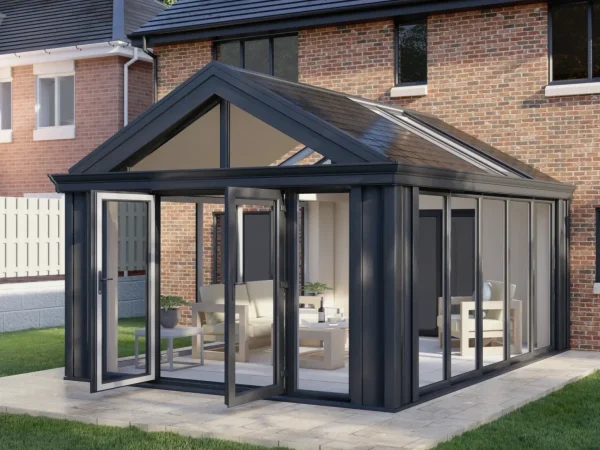Choose a patio door that stops the cold getting in
With winter approaching, it’s time to take care of your patio doors if they are currently draughty and inefficient. Perhaps you’re looking for a quick solution, or maybe you want to replace the doors completely. If it’s the latter, take a look at our patio doors for some inspiration.
Cold draughts end up not only impacting your energy-efficiency but also your home’s security, as it means the door is not closing properly. In general, glass isn’t a good natural insulator when it comes to trapping valuable heat in your home, so it’s good to be aware of what you can do to improve matters. Otherwise, your house will be less energy-efficient – adding to your heating bills.
How do you insulate a draughty patio door?
If you’re not ready to replace your patio doors and just want to make the best of the situation you have right now, you might want to look into insulation of your draughty doors. There are a few practical ways you can insulate a draughty patio door. But before anything else, you want to look for dirt, gravel, small stones or other debris that may be trapped in your doors – items like this can easily collect on the tracks of a sliding door, stopping it from shutting properly.
The next step is to check your weatherstripping – the black rubbery material that helps seal the gaps when the doors are closed. Maybe it needs replacing (as it does wear down over time), or perhaps you don’t have any at all and you now want to put some weatherstripping in.
After taking care of that, you can also get a panel of rigid foam insulation to cover the whole window. This is a good option if you get a lot of frost on the inside of a poorly-insulated glass door and you’re after a really robust solution. A more discreet option could be treatments like blinds, draperies, blackout curtains or even clear plastic window film (which has the advantage of still letting in the light and letting you enjoy your garden view).
Does putting plastic on the windows really help?
If you’re not able to put in new patio doors, then plastic film can be an interim solution to help with draughts. This shrink wrapping is primarily seen on windows but can be used on doors too –although it does prevent you from then using the door during the winter months.
It might not be the most attractive option but it’s simple enough to do yourself, as shrink wrap is relatively affordable and easy to install. Many shops will sell you a full kit with all the tools provided – you just cut the film and apply it to the window according to the instructions, then use a hairdryer to blow hot air on it firmly, making sure the film shrinks tightly with no wrinkles. If you don’t mind the view being blocked a bit, then using bubble wrap as an extra layer in-between is a nifty tip to increase the insulation.
Overall, these are stop-gap solutions with multiple downsides, such as rendering your back door unopenable and blocking the view. As well as that, these DIY insulation tips won’t last long, either. It might be time to think about a brand new door – and if you’re worried about the price, check out our flexible finance options that could help.
How to choose an energy-efficient patio door
When it comes to our patio doors, you can choose between uPVC or aluminium – both are easy to clean and maintain. For the actual energy efficiency make sure you look at the technical specifications, which include the glazing (double or triple are best) and the U Value – which is an energy efficiency assessment (the lower the U value, the better).
As well as energy-efficiency, you want to think about other factors like how often you use the doors. If the new doors are also going to act as an entrance to your home, you want to pick doors that are easy to open, like our French doors. If you live in a smaller space, bear in mind that sliding doors might be best because they don’t cause any obstructions.
 Amazing Living Spaces
Amazing Living Spaces
 Finance Options Available
Finance Options Available








